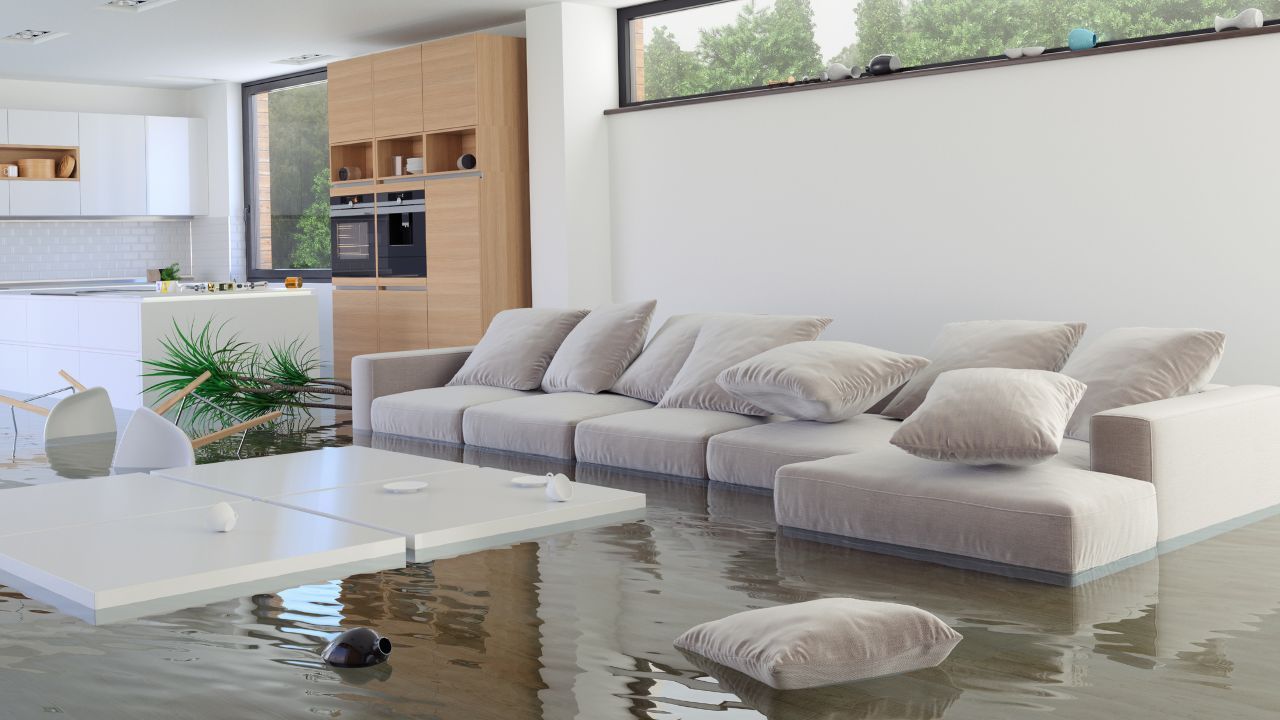Mountain Rest SC Home Insurance

9:00am - 5:00pm Mon-Fri
Will Reply in 15min*
Index
Contact Us
Phone
864-626-6181
service@southerninsured.com
Location
5 Century Drive Suite 130 Greenville, SC 29607
810 Dutch Square Boulevard, Suite 123 Columbia, SC 29210
Homeowners in Mountain Rest, South Carolina, face a unique set of insurance challenges shaped by regional risks, rising premiums, and evolving market conditions. Understanding the current landscape of home coverage here is essential for protecting your investment and ensuring peace of mind. This overview breaks down key factors influencing homeowners insurance in Mountain Rest, including recent premium trends, climate impacts, and what to expect when shopping for coverage.
Recent data shows that
homeowners insurance premiums across the United States have surged dramatically, with an average increase of 21% from May 2022 to May 2023 alone. This sharp rise reflects broader national trends that also affect Mountain Rest residents. For those interested in the wider picture,
Policygenius offers a detailed pricing report that highlights these changes and what they mean for homeowners nationwide.
Understanding Premium Increases in Mountain Rest
Homeowners insurance rates have been climbing steadily over the past several years, and Mountain Rest is no exception. Between 2018 and 2023, the U.S. saw a cumulative increase of 19.1% in homeowners insurance premiums, with some states experiencing even steeper rises. While South Carolina’s exact figures vary by county and insurer, the upward pressure on rates is clear.
Florida, for example, has seen a staggering 41.5% increase in the same period, demonstrating how regional factors can accelerate premium growth. Mountain Rest’s location near mountainous terrain and forested areas introduces its own risk profile, potentially influencing rates. These hikes are driven by a combination of factors including inflation, increased claims costs, and more frequent natural disasters.
Experts like Dale Porfilio, president of the Insurance Research Council, emphasize that affordability has been deteriorating for homeowners insurance over the past two decades. Porfilio notes, “It’s not just in the last couple of years, it’s been going on for 20 years,” underscoring a long-term trend that Mountain Rest residents should be aware of when budgeting for coverage.
What Drives These Rising Costs?
Several elements contribute to the rising cost of homeowners insurance in Mountain Rest. One key factor is the increasing frequency and severity of natural disasters, including wildfires and storms, which lead to more claims and higher payouts from insurers. This trend has pushed reinsurance costs higher, which insurers then pass on to policyholders.
A recent study found that homeowners insurance premiums rose by an average of 33% between 2020 and 2023, outpacing inflation and reflecting the growing financial strain on the industry. These increases are not isolated to urban areas but extend to rural and mountainous regions alike, including Mountain Rest.
Additionally, local building costs and supply chain disruptions can inflate repair expenses, further driving up premiums. As Philip Mulder, assistant professor at the University of Wisconsin, points out, “Homeowners insurance is becoming more expensive, even as it becomes harder to find a reliable policy.” This dual challenge of higher costs and limited options is a reality for many in Mountain Rest.
Moreover, the unique geographical features of Mountain Rest, such as its proximity to dense forests and rugged landscapes, can also heighten the risk of property damage from wildfires. Insurers often assess these risks meticulously, leading to higher premiums for homes situated in areas deemed vulnerable. The local climate, characterized by seasonal variations and unpredictable weather patterns, further complicates the insurance landscape, as insurers must account for potential claims arising from severe weather events.
In addition to environmental factors, the demographic shifts in the region are also influencing insurance rates. As more people move to Mountain Rest seeking a quieter lifestyle, the demand for housing has surged, resulting in increased property values. Higher home values mean that replacement costs for insurance policies rise, which can lead to further premium increases. This interplay between demand, property values, and risk assessment creates a complex web that homeowners must navigate when securing insurance coverage.

Climate Change and Its Impact on Mountain Rest Insurance
Climate change is reshaping the home insurance industry in profound ways, especially in regions vulnerable to natural disasters. Mountain Rest’s proximity to forested and mountainous areas means it faces increased wildfire risk and severe weather events, which insurers are factoring heavily into their pricing and underwriting decisions.
Research highlights that climate change could lead to “mortgage deserts” in high-risk areas within the next 10 to 15 years. These are regions where obtaining homeowners insurance becomes so difficult or expensive that homeownership itself is threatened. While Mountain Rest is not yet classified as such, the risk trajectory suggests homeowners should prepare for potential changes in coverage availability and cost.
Innovations like machine learning frameworks are being developed to assess climate resilience and guide insurance and real estate decisions. A recent study demonstrated high accuracy in predicting insurance viability based on climate risk factors, achieving 88.3% accuracy in Zhejiang and 79.6% in Ireland. While this research is global, it signals a future where data-driven insights will play a larger role in determining insurance options for Mountain Rest homes.
For a closer look at how climate change is influencing the housing market and insurance industry, RISMedia provides an in-depth analysis worth reviewing.
Preparing for Climate-Related Risks
Homeowners in Mountain Rest can take proactive steps to mitigate climate-related risks and potentially reduce insurance costs. These include investing in fire-resistant building materials, maintaining defensible space around properties, and installing storm-resistant features. Insurers often reward such measures with discounts or more favorable terms.
Understanding your property’s risk profile and discussing it with your insurance agent can help tailor coverage that balances protection and affordability. As the market adapts to climate realities, staying informed will be key to navigating future changes.
Moreover, community engagement plays a crucial role in enhancing resilience against climate threats. Local initiatives aimed at forest management, such as controlled burns and invasive species removal, can significantly reduce wildfire risks. Homeowners can collaborate with local governments and environmental organizations to promote sustainable practices that not only protect individual properties but also benefit the broader ecosystem. By fostering a culture of preparedness and community responsibility, Mountain Rest residents can create a more secure environment for current and future generations.
Additionally, the integration of renewable energy sources, such as solar panels and wind turbines, can not only help homeowners reduce their carbon footprint but also potentially lower their insurance premiums. Insurers are increasingly recognizing the value of sustainable energy solutions as part of a comprehensive risk management strategy. As more homeowners in Mountain Rest adopt these technologies, it may lead to a shift in how insurers assess risk, ultimately making the area more attractive for both current and prospective residents.
Current Market Conditions and Coverage Options
The home insurance market has experienced volatility in recent years, with steep premium hikes and tightening coverage terms. However, there are signs of stabilization emerging after this period of turbulence. A report from Matic suggests the market may be leveling off, offering some relief to homeowners who have faced escalating costs and coverage challenges.
This stabilization does not mean prices will drop significantly but indicates fewer dramatic increases and more consistent underwriting standards. For Mountain Rest residents, this could translate into more predictable insurance expenses and improved access to coverage.
When shopping for homeowners insurance in Mountain Rest, it is important to compare policies carefully. Coverage can vary widely in terms of dwelling protection, liability limits, and additional endorsements such as flood or wildfire coverage. Some insurers may also offer discounts for bundling policies or implementing safety features.
Key Coverage Considerations
Mountain Rest homeowners should pay particular attention to:
- Dwelling Coverage: Ensures the physical structure of your home is protected against covered perils.
- Personal Property: Covers belongings inside the home, with options for scheduled personal property endorsements for high-value items.
- Liability Protection: Provides financial protection if someone is injured on your property or you are legally responsible for damage.
- Additional Living Expenses: Covers temporary housing costs if your home becomes uninhabitable due to a covered loss.
- Natural Disaster Endorsements: Flood and wildfire coverage are often separate and may require additional premiums or policies.
Discussing these elements with a knowledgeable agent familiar with Mountain Rest’s risks can help ensure your policy matches your needs. Additionally, understanding local weather patterns and geographical risks can further inform your insurance decisions. For instance, Mountain Rest's proximity to natural features like lakes and forests may necessitate additional coverage options for flooding or fire damage, which are becoming increasingly relevant in today’s climate.
Moreover, as homeowners begin to recognize the importance of sustainability, many insurance companies are now offering green home endorsements. These policies can provide coverage for eco-friendly upgrades or repairs, such as solar panels or energy-efficient appliances, which not only help the environment but can also lead to cost savings in the long run. Therefore, it’s worth inquiring about such options when evaluating different insurance providers to ensure that your policy aligns with both your financial goals and your commitment to sustainable living.
Challenges in Finding Reliable Coverage
Despite the availability of coverage options, many homeowners in Mountain Rest face challenges securing reliable and affordable insurance. The combination of rising premiums, stricter underwriting, and increased claims frequency has made the market more competitive and selective.
Insurance experts warn that affordability is deteriorating, a trend that has persisted for decades. This makes it harder for some homeowners to maintain continuous coverage or find policies that offer adequate protection without breaking the bank. For those in higher-risk zones, such as wildfire-prone areas near Mountain Rest, these difficulties are even more pronounced.
It is advisable to start the insurance search early, maintain a good credit score, and consider risk mitigation improvements to improve eligibility and rates. Staying informed about market trends and policy changes can also help homeowners avoid coverage gaps.
For additional insights on the challenges facing homeowners insurance,
Insurance News offers expert perspectives that shed light on this evolving landscape.

What Mountain Rest Homeowners Should Keep in Mind
As the home insurance market continues to evolve, Mountain Rest homeowners should focus on a few key strategies to protect their investments:
- Regularly Review Coverage: Ensure your policy limits and endorsements reflect current rebuilding costs and risk exposures.
- Invest in Risk Reduction: Fire-resistant landscaping, storm shutters, and other improvements can reduce risk and premiums.
- Shop Around: Comparing quotes from multiple insurers can uncover better rates and coverage options.
- Understand Policy Exclusions: Know what is and isn’t covered, especially regarding natural disasters common in the region.
- Stay Informed: Monitor changes in the insurance market and local risk factors that could affect your coverage.
By taking these steps, Mountain Rest residents can better navigate the complexities of homeowners insurance and secure protection that fits their needs and budgets.
Coverage Comparison Table
| Coverage Type | What It Covers | Typical Considerations for Mountain Rest |
|---|---|---|
| Dwelling Protection | Damage to the home structure from fire, wind, theft, and other perils | Ensure limits cover rebuilding costs in mountainous terrain |
| Personal Property | Loss or damage to belongings inside the home | Consider scheduling high-value items like electronics or jewelry |
| Liability Coverage | Legal and medical expenses if someone is injured on your property | Important due to outdoor activities common in Mountain Rest |
| Additional Living Expenses | Temporary housing costs if home is uninhabitable | Crucial given potential for wildfire or storm damage |
| Flood & Wildfire Endorsements | Separate coverage for flood or wildfire damage | Often necessary due to regional climate risks |
Before You Go: Key Takeaways for Mountain Rest Homeowners
Homeowners insurance in Mountain Rest is shaped by rising premiums, climate risks, and a market that is slowly stabilizing after years of volatility. Being aware of the long-term trend of increasing costs, driven in part by climate change and natural disasters, is crucial for planning your coverage.
Taking proactive steps to reduce risk and regularly reviewing your policy can help manage expenses and ensure adequate protection. While finding affordable, reliable coverage can be challenging, especially in higher-risk areas, informed homeowners have more tools than ever to make smart insurance decisions.
For a comprehensive overview of the current home insurance pricing trends, Reinsurance Business provides valuable insights on the factors driving premium increases nationwide.
Frequently Asked Questions
Q: Why are homeowners insurance premiums rising in Mountain Rest?
A: Premiums are increasing due to factors like higher claims from natural disasters, inflation, and rising reinsurance costs.
Q: Does climate change affect my home insurance?
A: Yes. Increased wildfire and storm risks can lead to higher premiums and stricter underwriting.
Q: Can I get discounts on my homeowners insurance?
A: Many insurers offer discounts for safety features, bundling policies, or risk mitigation efforts.
Q: Is flood coverage included in standard homeowners insurance?
No. Flood insurance is usually a separate policy or endorsement and may be necessary depending on your location.
Q: How often should I review my homeowners insurance policy?
Review your policy annually or after major home improvements to ensure adequate coverage.
Q: What should I do if I can’t find affordable homeowners insurance?
Consider working with an insurance broker, improving your home’s risk profile, or exploring state-backed insurance options.







